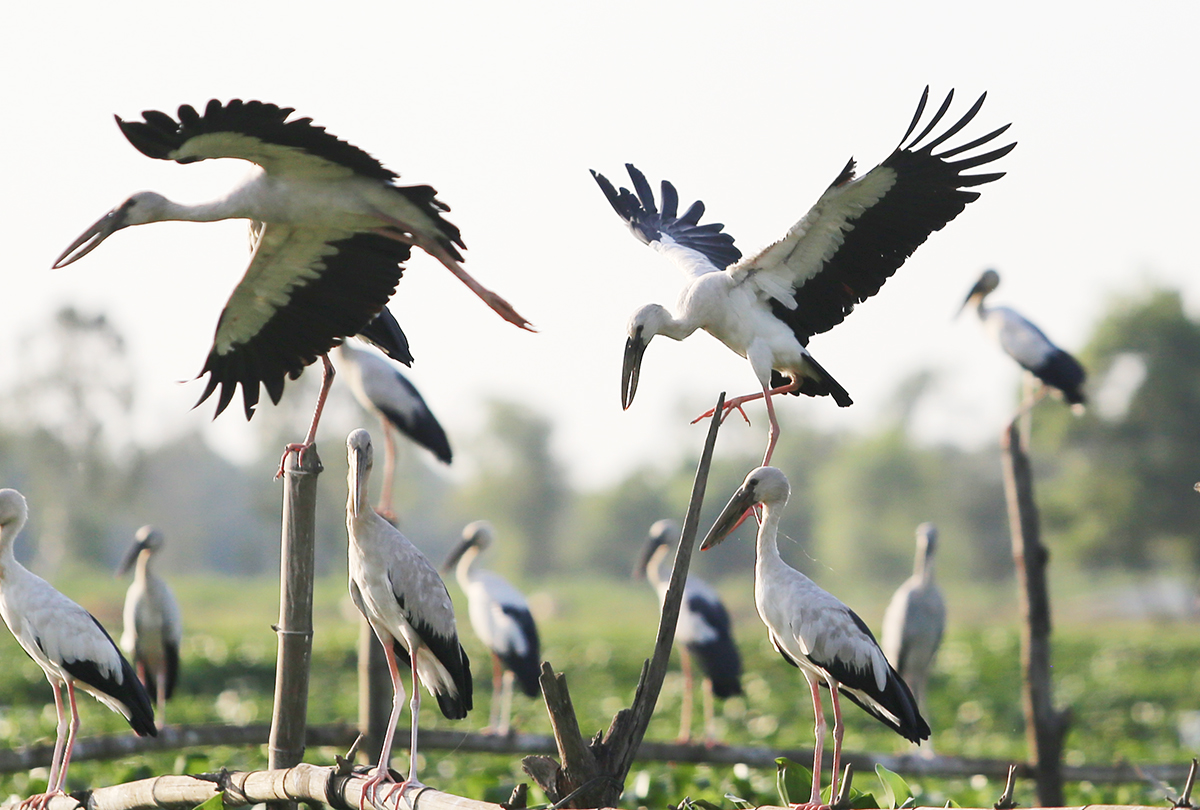Introduction

Asia, the largest continent on Earth, is home to incredible biodiversity and serves as a crucial stopover for millions of migratory birds each year. During specific seasons, countless flocks travel from northern regions to the south in search of warmer climates and abundant food sources. This migration phenomenon not only showcases the marvels of nature but also highlights the ecological connections among continents, countries, and ecosystems. Studying prominent migratory birds in Asia helps us understand nature’s adaptability and raises awareness of conservation efforts for rare and endangered species.
The Importance of Migratory Birds in Asia
1. Maintaining Ecological Balance
Migratory birds play an essential role in controlling insect populations, dispersing seeds, and maintaining ecosystem stability. They help reduce agricultural pests and promote natural vegetation growth.
2. Scientific and Educational Value
Bird migration provides valuable data for scientists studying climate change, habitat shifts, and ecological behavior. Moreover, bird migration serves as an educational tool and raises public awareness of environmental protection.
3. Potential for Ecotourism Development
Many Asian countries have developed birdwatching tours, especially during migration seasons. This activity generates economic value while supporting conservation initiatives.
Major Migration Routes in Asia
1. East Asia–Australasia Flyway
One of the world’s most significant migration routes, where millions of waterbirds and seabirds travel from Siberia down to Southeast Asia, Australia, and New Zealand to escape harsh winters.
2. Central Asian Flyway
This route stretches from northern Asia through Central Asia to South Asia. Many raptors, waterbirds, and grassland species migrate along this pathway.
3. East Asia–Siberia Flyway
Prominent for seabirds and waterbirds, this migration path runs along the eastern coast of Asia, from Siberia down to Southeast Asia.
Prominent Migratory Birds in Asia

1. Sarus Crane (Grus antigone)
The Sarus Crane, the tallest flying bird in the world (up to 1.8 meters), is a symbol of longevity and good fortune in many Asian cultures. These cranes migrate from India and Nepal to Southeast Asia to breed and forage.
2. Bar-headed Goose (Anser indicus)
Renowned for its incredible ability to fly over the Himalayas at altitudes exceeding 9,000 meters, the Bar-headed Goose migrates from Central Asia to India to escape extreme cold. Its endurance is a testament to nature’s resilience.
3. Black-faced Spoonbill (Platalea minor)
Listed as endangered by the IUCN, the Black-faced Spoonbill is a rare waterbird seen in coastal regions of Korea, China, Japan, and parts of Southeast Asia during migration. Its distinct spoon-shaped bill makes it easy to identify.
4. Oriental Stork (Ciconia boyciana)
Native to Russia, China, Japan, and Korea, the Oriental Stork migrates southward during winter. In Japanese culture, this species is associated with peace, prosperity, and longevity.
5. Spoon-billed Sandpiper (Calidris pygmaea)
One of the rarest migratory birds in the world, the Spoon-billed Sandpiper migrates from Siberia to Southeast Asia. Its population is critically endangered due to habitat loss and climate change.
6. Osprey (Pandion haliaetus)
The Osprey is a widespread raptor across Asia, known for its exceptional fishing skills. During winter, it migrates from temperate zones to tropical regions where food is abundant.
7. Atlantic Puffin (Fratercula arctica)
Although more famous in Europe, some puffins migrate to northern Asian waters. With their colorful beaks and unique appearance, puffins attract birdwatchers worldwide.
8. Swallows (Hirundinidae)
Swallows are among the most familiar migratory birds, often associated with spring and good luck. They migrate in large flocks from temperate regions of Asia to South and Southeast Asia, creating breathtaking skies during their journey.
Challenges Facing Migratory Birds in Asia

1. Habitat Loss
Urbanization, industrial expansion, and agricultural development have drastically reduced wetlands, forests, and mudflats that serve as vital stopover sites.
2. Illegal Hunting
Many rare migratory birds are hunted for trade or food, causing sharp population declines and threatening species survival.
3. Climate Change
Extreme weather events disrupt food availability, breeding patterns, and migration routes. Climate change poses a long-term threat to bird populations across Asia.
4. Pollution
Water, air, and plastic pollution severely impact migratory birds, particularly waterbirds that rely heavily on coastal ecosystems.
Conservation Efforts for Migratory Birds in Asia
1. Establishing Protected Areas
Countries such as China, Japan, Korea, and Vietnam have created protected reserves, especially in critical wetland habitats along major migration flyways.
2. International Cooperation
Organizations like BirdLife International and IUCN collaborate with governments to establish cross-border ecological corridors for migratory birds.
3. Public Awareness and Education
Raising awareness within local communities helps reduce illegal hunting and encourages participation in conservation.
4. Ecotourism Development
Birdwatching tours generate income and create incentives for locals to protect migratory bird populations.
Conclusion
Migratory birds are not only a breathtaking natural spectacle but also symbols of ecological connection across countries and ecosystems. Asia, with its diverse geography, serves as a critical stopover for many rare species. However, threats such as habitat loss, hunting, and climate change make conservation efforts more urgent than ever. Protecting migratory birds ensures the preservation of biodiversity and natural beauty, fostering harmony between humans and nature.
This article provides a comprehensive overview of prominent migratory birds in Asia, covering their characteristics, migration routes, ecological roles, challenges, and conservation efforts. It is a valuable resource for nature enthusiasts, researchers, and ecotourism development initiatives.
Read more:
Essential Vitamins and Supplements for Pets – A Complete Guide for Responsible Pet Owners
International Cat Transport vs Dog Transport – What’s the Difference?

